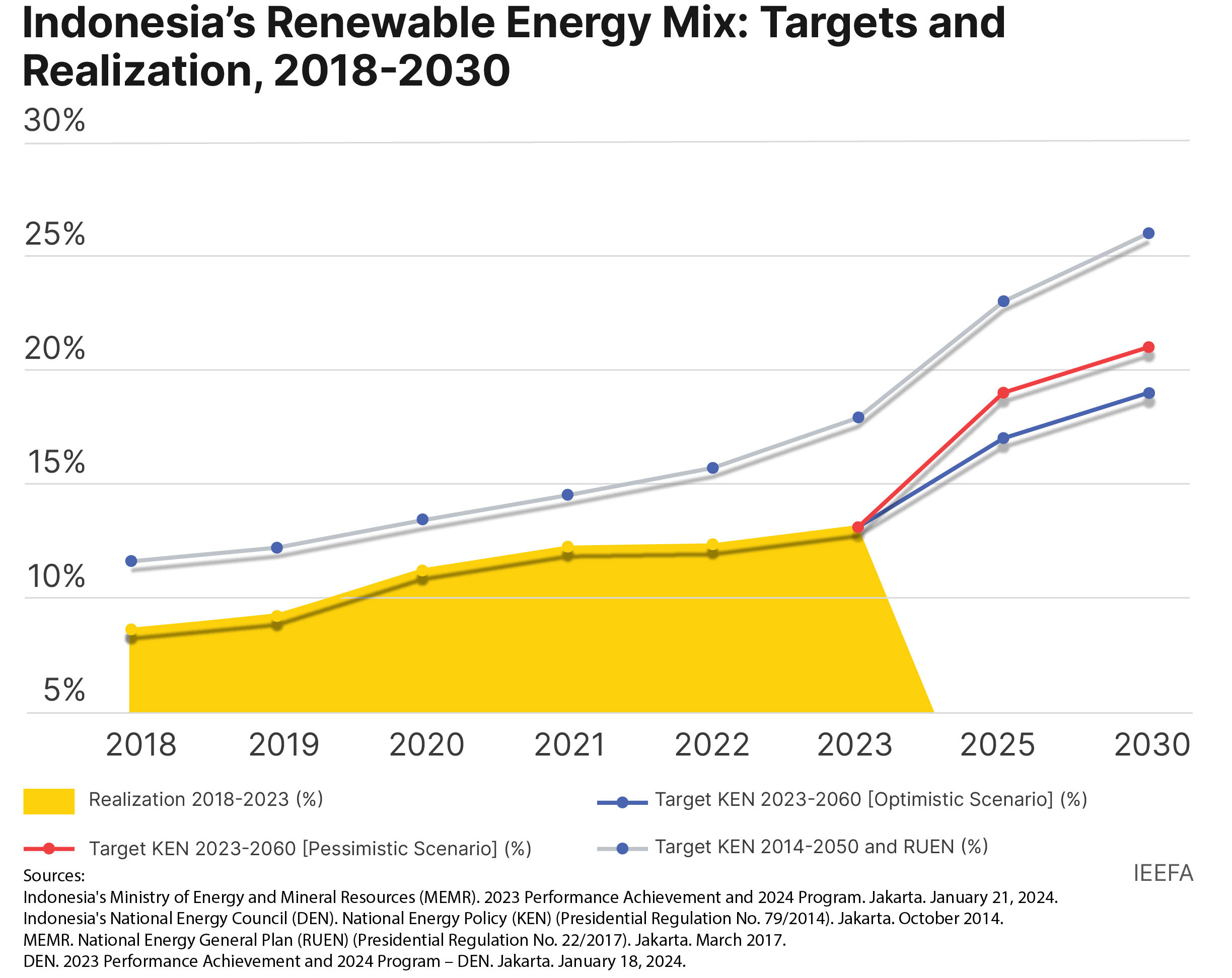Just more than two months ago, the COP28 climate summit concluded with a landmark agreement wherein 123 countries committed to tripling the world’s installed renewable energy (RE) generation capacity to at least 11,000 gigawatts (GW) by 2030, transitioning away from fossil fuels, doubling energy efficiency improvements, and accelerating methane emission reductions.
To continue reading, subscribe to Eco‑Business.
There's something for everyone. We offer a range of subscription plans.
- Access our stories and receive our Insights Weekly newsletter with the free EB Member plan.
- Unlock unlimited access to our content and archive with EB Circle.
- Publish your content with EB Premium.
In Indonesia, outgoing President Joko Widodo has been consistently reiterating the country’s vow to achieve net zero emissions (NZE) by 2060 or sooner. Despite this, the Indonesian government opted not to sign the global renewable and energy efficiency pledge at COP28, raising questions about whether Indonesia’s NZE target will be met.
Currently, Indonesia’s National Energy Council (DEN) is working on updating Government Regulation No. 79 of 2014 concerning the National Energy Policy (KEN), which is slated for completion this June.
The draft, pending discussion in the House of Representatives, would reduce the national RE target for 2025 from 23 per cent of total energy to 17 to 19 per cent, based on the new assumption that Indonesia can only increase the RE portion by around 2 to 3 per cent per year. Similarly, for 2030, the draft KEN saw a reduction of the RE target from 26 per cent to 19 to 21 per cent. Such moves could signal low government commitment to the energy transition and prolong Indonesia’s high dependence on fossil fuels.

The new draft policy target is not aligned with the Indonesian government’s commitments under its Nationally Determined Contributions (NDC) submitted to the United Nations Framework Convention on Climate Change. Such backtracking could jeopardise the US$20 billion Just Energy Transition Partnership (JETP) investment proposal being negotiated by the government with multiple donor governments, philanthropies, and the private sector, in which Indonesia proposed to achieve a 44 per cent RE target by 2030, up from the previous 2022 JETP Joint Statement target of 34 per cent.
Indonesia’s consistent failure to reach its RE target
Over the past five years, Indonesia’s incremental RE contributions to the primary energy and electricity generation mix increased only 1 to 2 per cent per year. The current share of RE in the electricity mix is 13.1 per cent, well below the 2023 target of 17.9 per cent, with a capacity of 13.2 GW comprising 94.5 per cent of hydroelectric, biomass, and geothermal.

By reducing their targets, the Indonesian government acknowledges that their current RE delivery process is failing. As the country prepares for a change in administration, with the outgoing President Joko Widodo’s term concluding in October, the nation is at a pivotal juncture. The incoming President and administration will inherit the significant task of advancing Indonesia’s commitment to achieving NZE by 2060 or earlier.
The incoming government needs to make new and extra efforts to ensure that even the reduced target is met. They must identify the root of the problem and make necessary adjustments to its policies, regulations, and processes to support the energy transition. There are several challenges and issues that the incoming government needs to overcome.
First, Indonesia’s lack of a clear and consistent regulatory framework for RE development demonstrates a lack of government commitment while raising concerns among investors and financial institutions. Although Indonesia has issued several regulations that support the RE environment in concept, the details of their practical implementation remain in question, making the sector appear highly risky and the country less attractive to investors.
Secondly, the GOI would benefit from re-evaluating its fossil-heavy strategy by understanding that the energy transition can create broad investment opportunities and widen job creation across the archipelago. Low-cost solar and wind renewables can be a rapidly deployed, economically sustainable solution while ensuring that Indonesia make material progress in meeting its NDCs, as demonstrated in many other countries. Moreover, the continually decreasing lifecycle cost of solar, wind, and battery storage technology can create fiscal benefits for the government, especially the financially struggling national utility, Perusahaan Listrik Negara (PLN).
Thirdly, creating a clear and transparent process for project procurement is important to unlock renewables’ investment potential. As demonstrated in other Southeast Asian markets, RE can catalyse various domestic and foreign investments, local lending, and technological innovations.
Indonesia’s RE tariffs have been set considerably lower than those of other countries in the region that are more advanced in RE realization. Furthermore, in the RE procurement process, the winner is determined by the lowest tariff proposed by the bidder, which makes the tariff even lower.
PLN’s aggressive equity co-ownership demands in recent renewable project tenders discourage international bidders. These factors make it difficult for prospective investors to understand how they will earn appropriate returns for their investments, adding barriers to an already risky business.
The incoming government needs to address these structural challenges and create policies and regulations that make the RE sector more accessible, certain, and profitable for potential investors.
Collaboration between the government, private sector, and civil society, along with robust policy frameworks, will be instrumental in overcoming these challenges and steering Indonesia toward an economically and environmentally sustainable net zero future.
Mutya Yustika is IEEFA‘s energy finance specialist, based in Indonesia.











